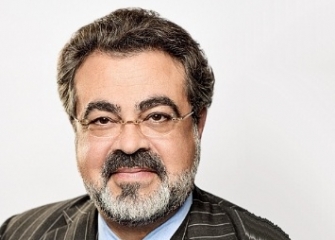(Bloomberg) — A former Royal Bank of Scotland Group Plc trader pleaded guilty to a fraud scheme in a new thread of the U.S. governments probe of the securitized debt market.
Matthew Katke, who agreed to cooperate with prosecutors, pleaded guilty Wednesday to conspiracy to commit securities fraud for participating in a multimillion-dollar scheme to cheat customers who bought and sold bonds, U.S. Attorney Deirdre Daly in Connecticut said in a statement.
Katke traded collateralized loan obligations, securities backed by high-yield corporate debt. The charge against him sprung from his activities while at RBS in Stamford, Connecticut, where he worked before joining Nomura Holdings Inc. in 2013. He is no longer employed by Nomura, according to a person with knowledge of the matter who asked not to be identified because the decision wasnt public.
The case reveals a new front for investigators looking to clean up markets for complex and often hard-to-value debt that helped cause the 2008 financial crisis. It shows how scrutiny is expanding past the mortgage-linked bonds at the heart of the meltdown and to CLOs, whose reputation largely escaped without the same taint.
Katkes guilty plea follows a string of suspensions at Wall Street banks as regulators scrutinize transactions in debt backed by everything from mortgages to corporate loans.
Trading in mortgage bonds and other securitized debt has come under scrutiny of regulators after former Jefferies Group LLC trader Jesse Litvak was accused and later convicted of securities fraud for lying to clients.
Litvak Conviction
Litvak appealed his March 2014 conviction for misrepresenting facts such as how much sellers were asking for mortgage securities or what customers would pay. His lawyer said in a November hearing that the conviction could be used to turn garden-variety statements made in all kinds of negotiations into the basis for charges. Katkes agreement allows him to withdraw his plea if Litvak wins his appeal.
As part of the RBS scheme, Katke and his co-conspirators made misrepresentations to induce buying customers to pay inflated prices and sellers to accept deflated prices for bonds, prosecutors said.
RBS has been cooperating and intends to continue to cooperate with the government with respect to this investigation, Sarah Lukashok, a spokeswoman for the Edinburgh-based bank, said in an e-mail.
Richard Albert, a lawyer for Katke, declined to comment on the plea.
Cooperation Promised
Katke agreed to cooperate fully with the government as the probe continues, and may be called to testify in grand jury proceedings or in any trials that may result from the investigation, according to a copy of his plea agreement provided by prosecutors.
While Katke faces as long as five years in prison, he may be eligible for a more lenient sentence if found to be helpful to the government, according to the agreement.
Katke pleaded guilty to one count of conspiracy to commit securities fraud, according to copies of court documents provided by prosecutors. He engaged in the scheme from about 2008 to June 2014, according to the documents.
Increasing Profit
Katke and co-conspirators agreed they would increase profits on bond trades by making false statements to customers, according to a copy of court documents provided by prosecutors. Katke and others misrepresented the prices RBS had paid to acquire a bond or what it was asking to sell it, they said. The group also misled customers about whether a bond came from RBSs own inventory or a third party, according to prosecutors.
Adam Siegel, who headed securitized-debt trading at RBS, was placed on leave last year, people familiar with the matter said last April. He later left the bank, the U.K.s largest government-owned lender, and joined investment firm Fortress Investment Group LLC in July. Siegel didnt return two messages left on his mobile phone and an e-mail Wednesday.
Participants in the CLO market have tried to distance themselves from the blow up in the market for mortgage bonds and collateralized debt obligations, or CDOs, used to package home- loan securities into new notes.
CLO Confusion
Bram Smith, executive director of the Loan Syndications & Trading Association, wrote in an op-ed in The Hill in September that there continues to be some confusion about CLOs — misconceptions that we can only think come from a conflation with CDOs.
CLOs pool high-yield corporate loans and slice them into securities of varying risk and return, typically with ratings from AAA down to B. The lowest unrated portion, known as the equity tranche, offers the highest potential returns and the greatest risk because investors are the first to see their payouts reduced when loans backing the CLO default.
CLO issuance rose to a record $123.6 billion in 2014, surpassing the previous high of $94 billion in 2006, according to JPMorgan Chase & Co. data. There has been $19.1 billion of deals raised in the U.S. this year as of March 6, according to the bank.
In contrast, issuance of bonds tied to new U.S. home loans without government backing totaled about $9 billion last year, according to data compiled by Bloomberg, compared with an annual peak of about $1.2 trillion before the financial crisis. Sales this year total about $3.5 billion.
Opaque Market
Trading in many parts of the securitized-debt markets — including both mortgage bonds and CLOs — remains opaque even as regulators seek to expand transparency in the wake of the financial crisis that was fueled in part by the difficulty in determining the value of the debt.
The Financial Industry Regulatory Authoritys board in December authorized its staff to seek comment on a plan to expand the industry-funded watchdogs dissemination of transaction data to more types of securitized debt.
WhileFinraalready is set to bring asset-backed securities tied to several asset types into its Trace system in a way that mimics the robust disclosures available for corporate bonds, the proposal for debt including home-loan securities without government backing and CDOs would be more limited. Trace would offer only real-time, trade-by-trade information with transaction sizes of less than $1 million.
Katke, who played soccer in college for Washington University in St. Louis, joined Nomura in August 2013 after leaving RBS three months earlier, according toFinrarecords. He was among 15 former Bear Stearns Cos. employees to leave for RBS in 2008 after JPMorgan agreed to buy the investment bank as it neared collapse.
The case is U.S. v. Katke, 3:15-cr-00038, U.S. District Court, District of Connecticut.










A Look at H.R. 1216 – The “Maker Taker Conflict of Interest REFORM Act”
While a pilot program focused on the most liquid stocks is not a bad idea, the notion of price controls as a singular solution, is.
Many of the most liquid stocks suffer from a problem insofar as they naturally trade at a narrower spread than the one cent increment mandated for all stocks. That said, the Congressional bill would result in an increase to the actual spread in those stocks, by eliminating the markets adaptation of “inverted” venues.
Put simply, this bill, if it exclusively focuses on “maker taker,” will serve to eliminate a significant market adaptation to the current “one size fits all” policy in the US equity market. The one cent spread for all equities is a main reason that there is such a wide range of access fee /rebate combinations across stock exchanges and trading systems. Exchanges do this in order to attract order flow across a wide range of stocks. Google, at over $500, trades very differently than Apple at $120 and both trade differently than SIRI, which trades at around $3. It should not be surprising, therefore, that the market share of different market centers and exchanges vary a great deal from stock to stock. Markets that provide rebates to liquidity takers tend to attract more order flow in active securities, where the one cent minimum spread is artificially wide (such as in the case of SIRI). Markets that provide large rebates to liquidity providers tend to attract more order flow in stocks with natural spreads of one cent or more.
In addition to this particular bill, there have also been calls to cap access fees. This type of proposal is also problematic for many of the same reasons. If it is determined that a pilot program for active stocks is indeed warranted, then the most sensible pilot is to test sub penny pricing, rather than fee caps or banning rebates. The current fee cap of 0.3 cents is equal to 30% of the 1 cent tick-size. IF tick size is reduced to 0.2 cents (from 1), keeping the fee cap at the same ratio would mean the fees would be capped at 0.06 cents, which is almost the same as the proposal to cap fees at 0.05 cents. Thus, allowing sub-penny pricing in these stocks would achieve materially similar cuts in access fees as a hard cap. This approach, however, would decrease spreads for the most liquid securities and likely reduce trading costs for investors. It would also have the benefit of NOT restricting competition and innovation, which have been the hallmark of our markets evolution.
It is also important, when considering the idea that we should ban rebates, that one of the main beneficiaries of rebates are retail investors. Whether their clients benefit indirectly through enhanced services or directly via lower commissions, retail brokers collect rebates for their order flow. Thus, it is a virtual certainty that banning maker-taker would lead to increased costs to retail investors.
Another concern is that the banning of maker taker could actually gain enough support to lead to a broader application. A broader ban would have the effect of reducing market making incentives for small to mid-cap securities. As I pointed out in theGrand Bargaincommentary, such an idea runs directlycounterto theJOBSAct by reducing liquidity for small companies, thereby, creating even larger structural hurdles.
Smaller companies display a demonstrable decrease in liquidity, relative to large caps, due to tick size being too small, compared to the bid offer spread. (Comment/data). This change may seem small to the uninitiated, but the difference between maker and taker fees is more than half of the tick size. This means that a broad ban of maker taker essentially cuts the effective tick size for many stocks by 50%. Thus, doing so across the board could have far reaching impact and should certainly not be done by legislative fiat.
Based on this bills introduction, it would appear that lobbyists have convinced Congress to take money from retail investors in order to help “for profit” exchanges and large banks. Since this bill would result in increased spreads for extremely active stocks and prevent retail brokers from collecting rebates, it is hard to justify. At the same time, giving credibility to the “benefits” of eliminating rebates altogether could lead in the future towards higher trading costs for small to mid-sized companies, as the incentives for providing liquidity are reduced.
As I have stated before, there is a better answer,Transparency. Improved disclosures and execution analysis are the best way to resolve conflicts of interests and improve market quality. As the old saying goes: “Sunlight is the best disinfectant”.
I agree with the BATSsletterto the SEC on this point and strongly urge Congress to let the SEC focus on improving disclosure and transparency. The alternative spelled out in this bill, while “just a pilot” is simply an example of anti-competitive price controls.
Given the track record of such legislation, one would hope we had learned that price control regimes end badly.
David Weisberger is the Managing Director and Head of Market Structure Analysis of RegOne Solutions
The views represented in this commentary are those of its author and do not reflect the opinion of Traders Magazine or its staff. Traders Magazine welcomes reader feedback on this column and on all issues relevant to the institutional trading community. Please send your comments to Traderseditorial@sourcemedia.com